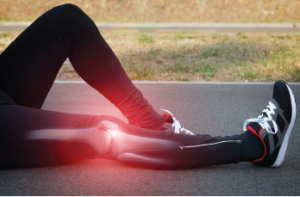
Monika Wisniewska / shutterstock.com
Although total knee replacement (TKR) surgery can improve pain and function in individuals with knee osteoarthritis (OA), many patients who are sedentary before undergoing TKR don’t increase their physical activity levels after surgery.
A new study led by Elena Losina, PhD, of the Department of Orthopaedic Surgery at Brigham and Women’s Hospital in Boston, examined why patients aren’t more active following TKR and looked at methods that could encourage them to increase their activity levels.1 The researchers found that telephonic health coaching (THC) combined with financial incentives (FI) led to an increase in steps taken and the amount of time spent exercising by study participants.
By conducting a randomized controlled trial following TKR surgery and postoperative physical therapy, the researchers hoped to assess whether financial incentives and health coaching might improve physical activity in TKR patients.
“People who suffer from knee pain for a number of years often fall into a sedentary lifestyle,” Dr. Losina says. “There’s a common fallacy that if you’re experiencing OA knee pain, you should rest your knees, but evidence shows low-impact exercise is actually good for the knees, and movement can circulate joint fluid and promote cartilage health and bone strength.”
In the study, Dr. Losina and her colleagues looked at 200 randomized subjects who had undergone TKR and examined whether their physical activity improved after surgery.
“TKR alone doesn’t lead to meaningful changes in physical activity,” Dr. Losina says. “[Although] surgery restores function and improves pain, patients who were sedentary before surgery require substantial behavior modification to improve their physical activity levels after surgery.”
Dr. Losina says rheumatologists could potentially play a role in motivating their patients to become more active.
“With recent moves to shift healthcare financing from paying for volume to value, expenditure of resources to improve physical activity will become increasingly attractive, given that physical activity is among the most important drivers of quality of life in OA,” Dr. Losina says.
Make Specific Exercise Recommendations
Rather than just telling people to change their lifestyle, Dr. Losina says the key to get patients to increase their physical activity lies in motivating them to understand the importance of making small changes.
“It’s like telling a student to get an A in class,” Dr. Losina says. “Patients need to know what [they need to do] to achieve that goal and [be] provided with the right kind of support.”
In her study, Dr. Losina says subjects were divided into one of four different groups, including an attention control group, which received phone calls conveying general health messages and had conversations based on general aspects of recovery and rehabilitation.
The second intervention focused on telephonic health coaching (THC), in which staff trained in motivational interviewing techniques made periodic calls. The THC calls were intended to focus on patients’ short- and long-term physical activity goals.
“It’s important for us to advise patients on what they need to do to increase their physical activity and to offer them support,” Dr. Losina says. “Even modest increases in physical activity have been shown to markedly reduce the risk of mortality.”
Dr. Losina’s findings are supported by evidence found in Exercise Is Medicine, a global health initiative that encourages healthcare providers to assess every patient’s level of activity at every clinic visit, provide patients with brief counseling to help them meet the guidelines and refer patients to either healthcare or community-based resources for further physical activity counseling and guidance.
The third intervention was financial incentives (FI), designed to provide study participants with both smaller and larger financial rewards for completing exercise logs. Each participant was assigned an escrow account containing $105, and they received $5 for completing at least five out of seven daily exercise logs.
The fourth (and most successful) intervention combined THC and FI. Participants received $5 from their escrow account for completing at least five out of seven daily exercise logs. They were also able to view the amount of money “lost” due to missed reporting.
Dr. Losina notes that many workplace wellness programs also offer financial incentives to get employees to increase their physical activity levels. A 2016 study published in the Annals of Internal Medicine found that 80% of large employers are now using some form of financial incentive to increase their employees’ physical activity levels.2
Use a Combined Approach
Investigators used the Fitbit Zip to measure exercise activity and duration. By combining THC and FI, study investigators found both the amount and duration of exercise increased. After six months, Dr. Losina says the average daily step count ranged from 5,619 in the patients who received only THC compared to 7,152 steps in those who received THC and FI. In addition, physical activity, as measured by total minutes per day, increased by 14 minutes in the THC-only group compared to 39 minutes in the THC plus FI group.
Although no existing studies look at providing THC and FI to patients after TKR, Dr. Losina says she and her colleagues are planning a larger study with multiple centers to look at the potential challenge and efficacy of putting incentive programs in place.
“We know some employer groups have wellness programs that encourage their employees to be more physically active,” Dr. Losina says. “They report employees tend to be healthier and also less likely to [miss] work.”
For rheumatologists interested in implementing a THC/FI program within their own practices, Dr. Losina recommends they focus on measurable goals, such as having patients start slow and increase their exercise goals by 10% from the previous week. In addition, she cites the Centers for Disease Control and Prevention guidelines of performing moderate to vigorous exercise for 150 minutes a week.
“Once patients became acclimated to exercising on a regular basis, they maintained their physical activity for the six months we followed them,” Dr. Losina says. “We plan to do a future study on how long they were able to sustain their physical activity over a longer period of time.”
Linda Childers is a health writer located in the San Francisco Bay Area.
References
- Losina E, Collins JE, Deshpande BR, et al. Financial incentives and health coaching to improve physical activity following total knee replacement: A randomized controlled trial. Arthritis Care Res (Hoboken). May 2018;70(5):732–740.
- Patel MS, Asch DA, Rosin R, et al. Framing financial incentives to increase physical activity among overweight and obese adults: A randomized, controlled trial. Ann Intern Med. 2016 Mar 15;164(6):385-394.

